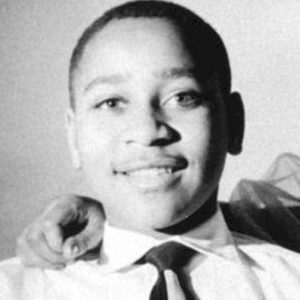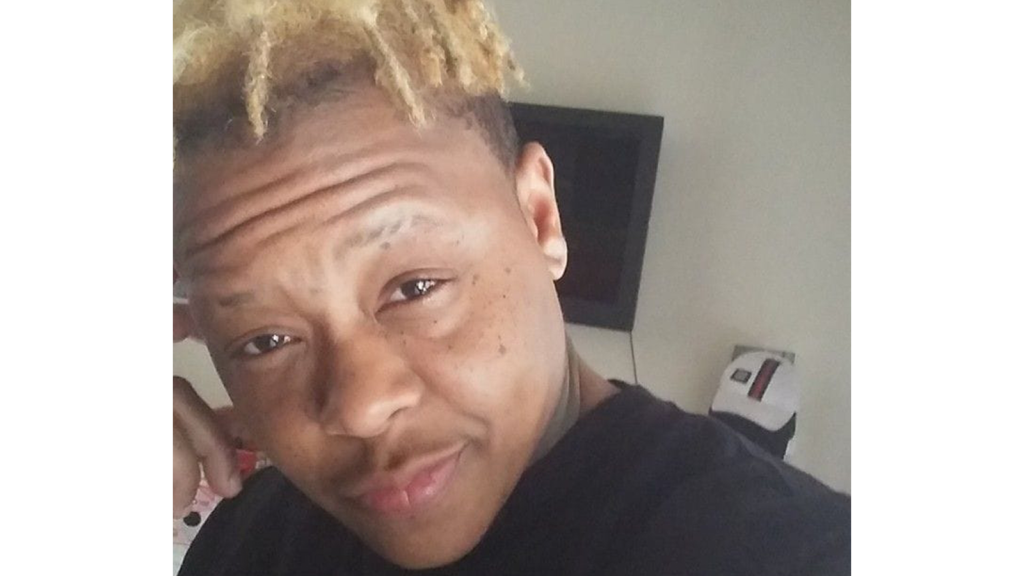**I dedicate this article to my Grandmother Augustine Ellis, from Louisiana, who survived Jim Crow, and sacrificed to create a better life for her family, and more recently fought and BEAT COVID-19. She turns 86 on June 1st, and she is my guiding star. Happy Birthday & Thank you, Grandma.**
This last week has been horrendous. In addition to grappling with an unprecedented pandemic with over 100,000 lives lost in America and 40 million people unemployed, this nation is mourning the senseless deaths of George Floyd, Tony McDade, Breonna Taylor, Sean Reed, Ahmaud Arbery, Nina Pop and countless others; and we are analyzing the actions of Amy Cooper towards Christian Cooper.
These stories are nothing new. Racism, violence, brutality, and the institutionalized perpetuation of white supremacy, is the American story.
The only difference now: it is finally being heard louder. Equipped with smartphones, white people are finally acknowledging what has been happening to Black and Indigenous people for over 400 years. This week is not an anomaly. This is America.
In addition to the trauma and devastation of the most deadly pandemic in modern history, which has already taken over 100,000 American lives, we are witnessing the modern-day lynching of Black bodies on social media and the news. The virus itself has a disproportionate impact on communities of color, but they also must face down the insidious disease that is racism, which poses a daily threat to the safety and lives of people of color.
America is burning. We’ve been burning since the inception of this nation. Justice has never been for all.
Black Mental Health Matters: The Cycle of Generational Trauma and the Toll it Takes on Black Lives
As Mental Health Awareness Month comes to an end, it’s especially important to recognize and discuss the historical trauma embodied by Black and Indigenous people in this country.
As defined by HVTN, historical trauma is “an event or a set of events that happen(s) to a group of people who share a specific identity. That identity could be based on nationality, tribal affiliation, ethnicity, race and/or religious affiliation, etc. Research exploring historical trauma looks at how the trauma of these events is “embodied” or held personally and passed down over generations, such that even family members who have not directly experienced the trauma can feel the effects of the events generations later [Walters et al., 2011].”
Said plainly, Black Americans are predisposed to trauma. The repeated viewing, retweeting, airing, and overall coverage of the police murdering Black people is triggering to the Black community. This cycle of violence, mirrored in the digital space, continues a tradition of being over-policed and underserved by a nation that was built on our backs.
I clearly remember learning about the brutal murder of Emmett Till, a 14-year-old boy. At the same time, I heard stories in direct parallel about my grandfather and other family members cutting friends and relatives down from trees after the dust had settled after public lynchings in the south under Jim Crow. These uniquely shared memories and associations are traumatic for the Black community.

Emmett Till. Photo obtained from https://www.biography.com/news/african-american-youth-civil-rights-movement
Media Narratives Mirror and Reinforce the Traumatic Racism and Violence Black People Experience
We have become accustomed to seeing the same cycle when such an atrocious crime against a Black person is committed – the story is elevated by the Twitterverse through hashtags, awareness spreads, but ultimately, the life of a Black victim is picked apart and unnecessarily scrutinized by white people:
- Why were they in the park in the first place?
- Why was she speeding?
- Why was he wearing a hoodie at night?
Why do we never ask these questions of a white person in their position?
Racism and implicit bias drive the narratives about these crimes against Black people, only to be whitewashed in the end because we are afraid or unwilling to confront the disease of racism in this nation.
When the initial focus is on the sins of the victims instead of the crimes committed by law enforcement, we are dismissing the systemic injustices experienced for generations by Black people, at the hands of those who have sworn to protect all. The cycle of trauma and injustice continues.
No Justice, No Peace; No Justice, No Pride
The pain experienced by the Black community when these hyper-visual depictions are shared is just as deep as when they are not captured on camera. It is a shame that we need videos for white people, and frankly, some non-white people to understand what marginalized communities experience every day in this country.
Specifically, the victims of hate crimes perpetrated by the police and others in the LGBTQ+ community. Those names do not receive the same national media coverage, or trend as hashtags compared to our brothers and sisters in the cis-heteronormative community.
This last week included the murder of Tony McDade, a Black transgender man in Tallahassee, FL, at the hands of the police. The details of this incident are still being investigated, but his death has served as a rallying call to action for the Black Lives Matter movement.
In addition to the murky details of his death, the media and some members of the Black community have been completely silent about his death. Worse still, others constantly mis-gendered him in the coverage.
As we enter LGBTQ+ Pride month, the LGBTQ+ community needs to challenge themselves to participate in this national discussion around combating racial injustices and uplift stories like Tony’s.
GLSEN recently released a statement on uniting to combat racial violence:
“The most recent white supremacist violence against Black people in homes, workplaces and public parks reminds us that there are no safe spaces for Black people in this country. At GLSEN, we recognize that our organizational purpose cannot be fulfilled without undoing the systemic racism and White supremacist violence targeting Black, Indigenous, and Brown people in our society and our schools.
In this moment of fury and mourning, we honor the contributions and investment of generations of Black LGBTQ+ people and people of color in our common movement.
We honor and recognize the Black LBGTQ+ people in our organizations, and those working on the front lines in communities to increase safety and ensure dignity for us all. All of us who are White must in this moment redouble our efforts to support Black communities, Black leadership and fight white supremacist and state violence in our lives and work,” said GLSEN Executive Director Eliza Byard.”
When we say “Black Lives Matter,” we must mean ALL Black lives matter. If the most marginalized members of our community are not free, then none of us are truly free.

Image: Tony McDade. Image obtained from https://www.hrc.org/news/hrc-mourns-tony-mcdade-black-transgender-man-killed-in-florida
We Know the Problem; Be Part of the Solution
The Black community is frustrated and filled with pain. We are not a monolith, and we are processing this pain in different ways. For those prepared to condemn the protestors across this nation, first think about what brought us to this point. Challenge yourself to know better, so you can do better.
MLK said, “a riot is the language of the unheard.” So stop and listen to the cries of your fellow countrymen/women. If you wish to become involved and become a better ally, here are some concrete actions you can take:
- Listen and Learn: Check your bias at the door and listen to the stories of Black people and BELIEVE them.
- Do the personal work to research and interrogate the dominant narrative, without placing the burden on Black people to educate you. This contributes to our trauma.
- Be Active in Our Democracy. This can take many forms:
- Voting
- Showing up for rallies
- Joining protests
- Donating your time and money to causes dedicated to empowering Black people and eradicating institutional barriers.
- When You See Something, Say Something
- To be an ally, you must be a disrupter. It’s not enough to be non-racist or not homophobic, you must be ANTI-racist and ANTI-homophobia and call it out when you see it, even if it makes you uncomfortable.
***
Message from the SIOV President: Bobby Donohoe:
The Strength in Our Voices (SIOV) team and community stands with the Black community. We do not tolerate any form of hatred or racism. We also understand that the systems of oppression, violence, and injustice that have been placed on the Black community for centuries is wrong and results in trauma that spans generations. SIOV believes in equality, compassion, love, and taking action to make changes that will improve the mental health outcomes of the family of humans with which we walk this earth. We stand in solidarity with everyone working to build a kinder, more inclusive world, where everyone has equal opportunity, treatment, and care. It starts with each of us supporting and empowering each other to raise our voice, show up, and impact change.
Additional Resources: Many ask the same questions: What can I do? What should I read? What should I watch? Below are just a few resources to review to inform discussions about some issues discussed in this blog.
Immediate Action:
What to Read & Watch:
- “When They See Us” (Netflix)
- The Link Between Experiences of Racism and Stress and Anxiety for Black Americans: A Mindfulness and Acceptance-Based Approach
- NIH: Mental Health Care for African Americans
- The Autobiography of Malcolm X
- “ I Am Not Your Negro” Documentary (2017)
- Background on the term “intersectionality”
- Parting the Waters: America in the King Years 1954-63
- Roxanne Gay article- No One is Coming to Save Us
- Citizen: An American Lyric by Claudia Rankine
Featured image obtained from: https://unsplash.com/@claybanks
Article Witten by Heidi Ellis: CEO/ Founder of HME Consulting & Advocacy, SIOV Director of Partnerships and Development

